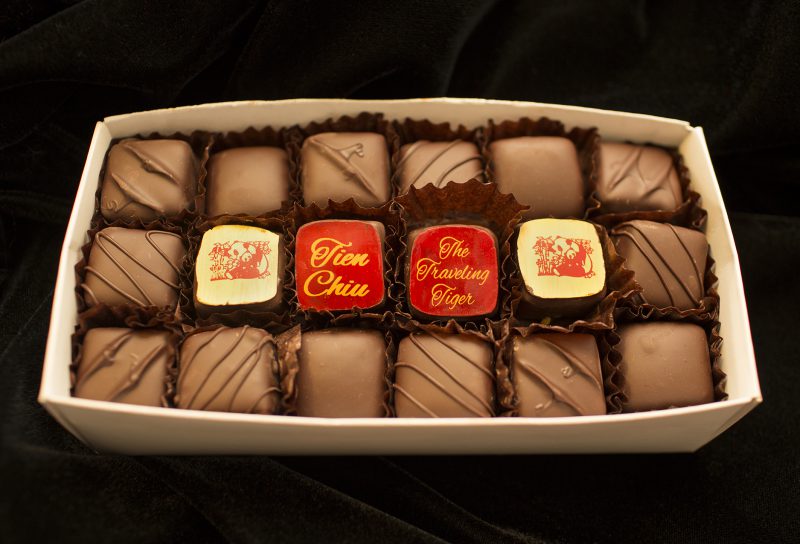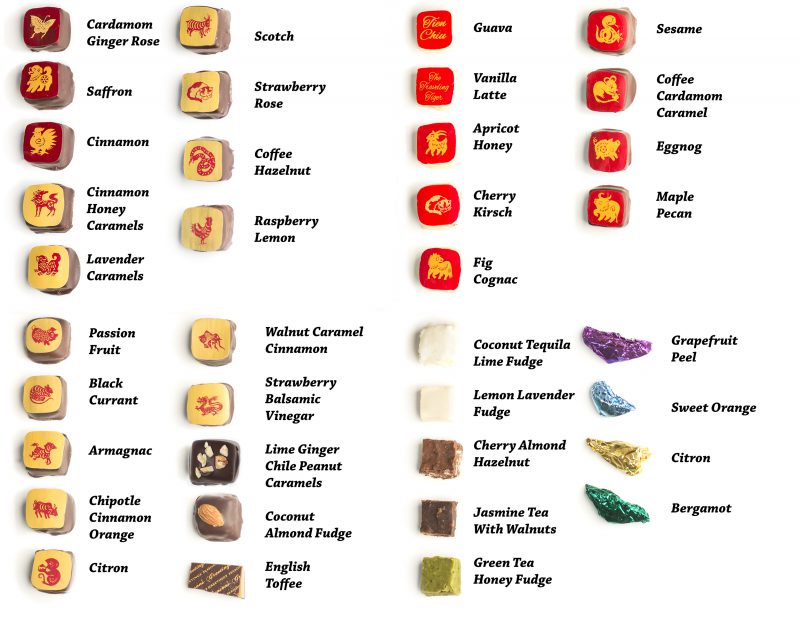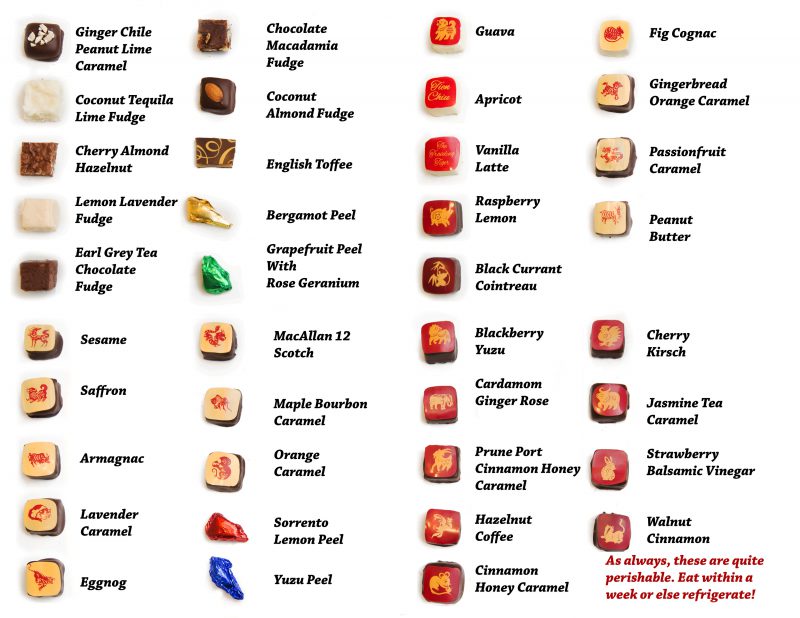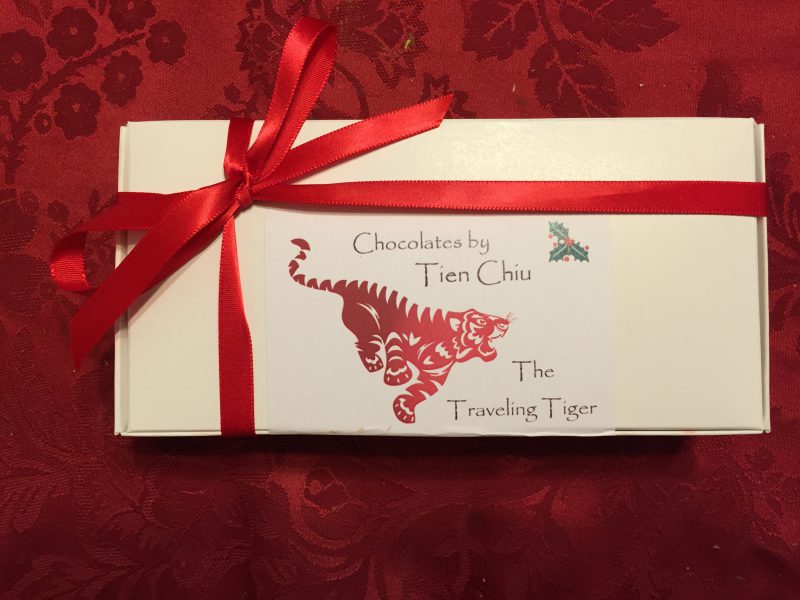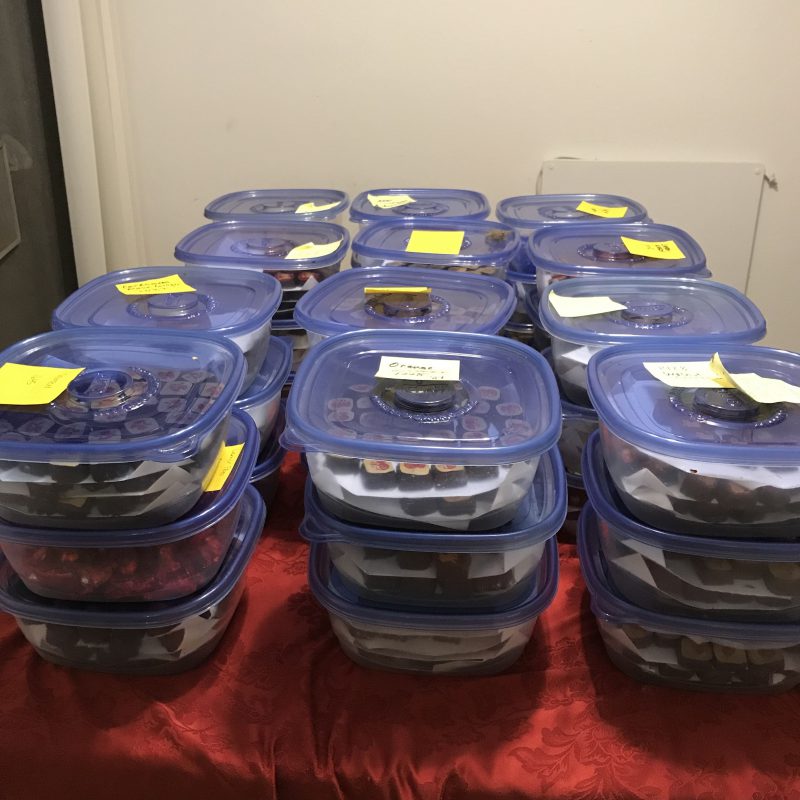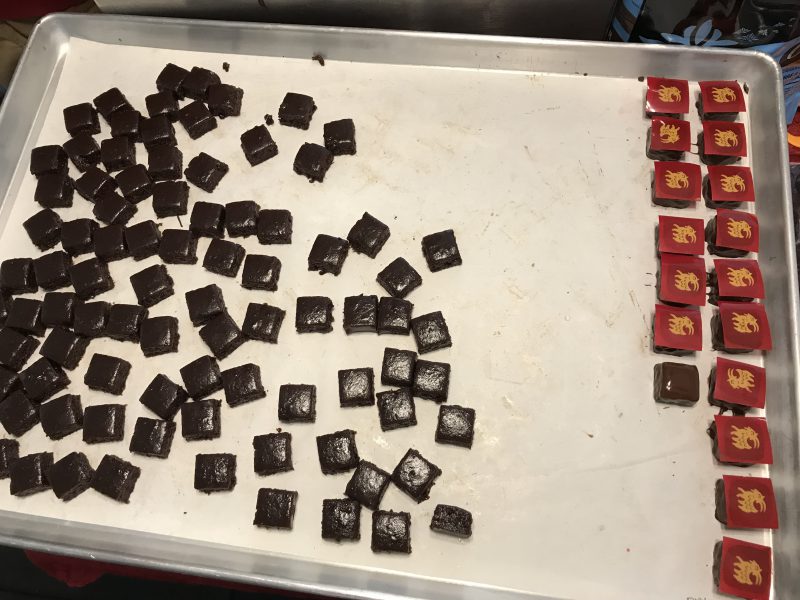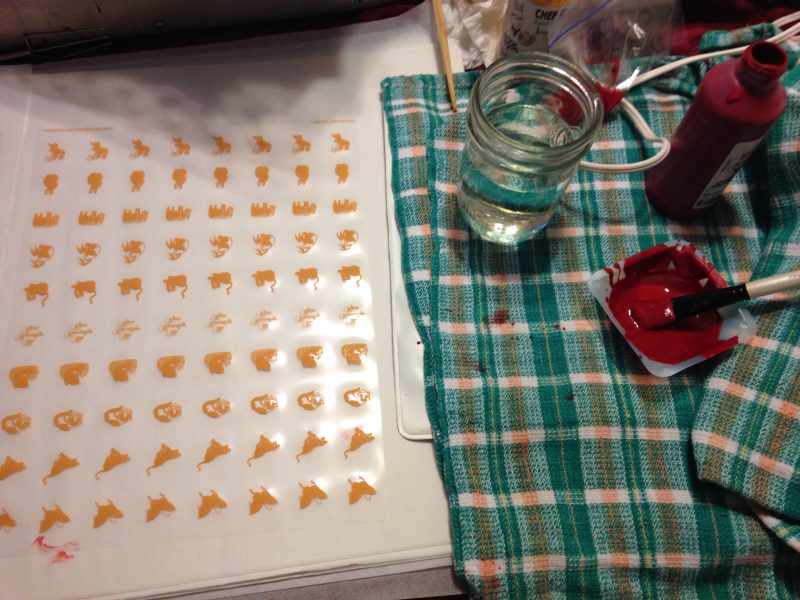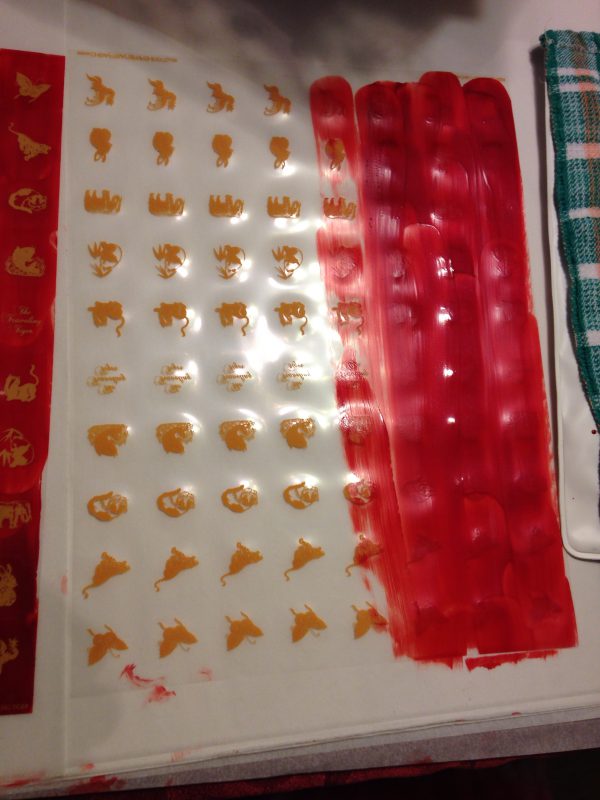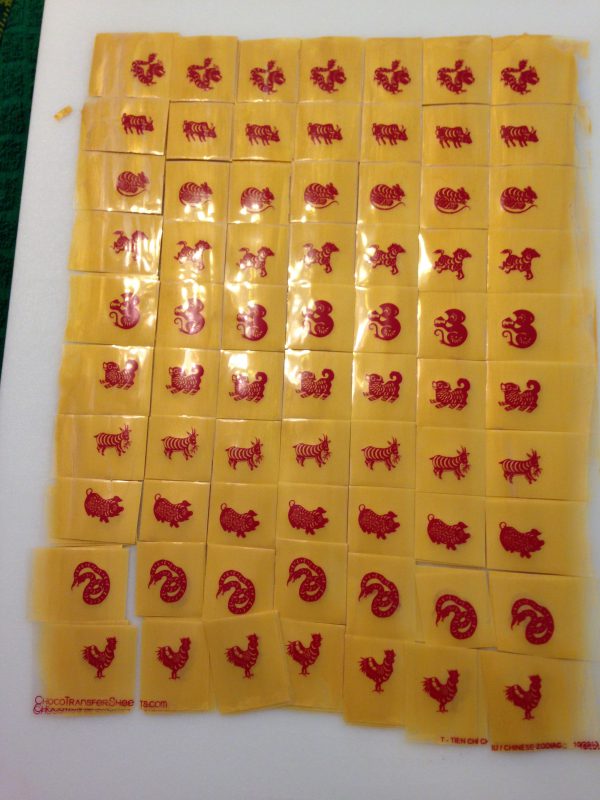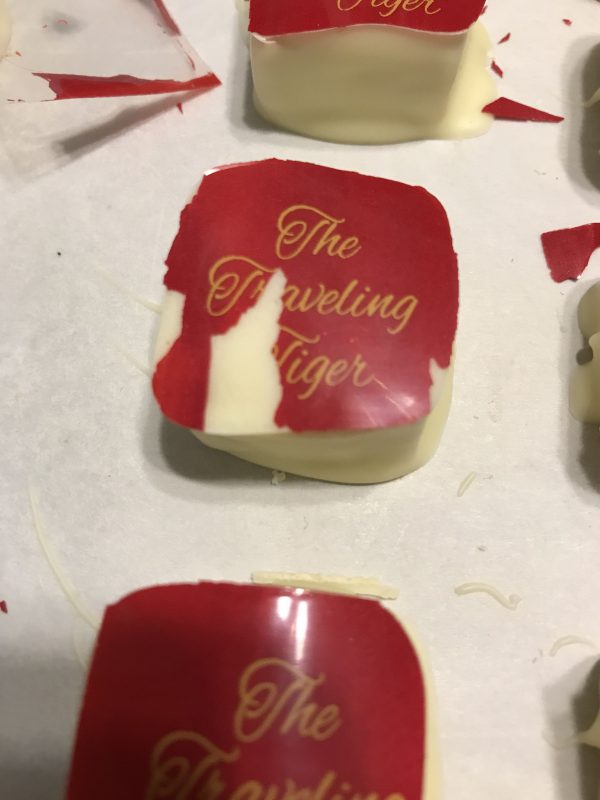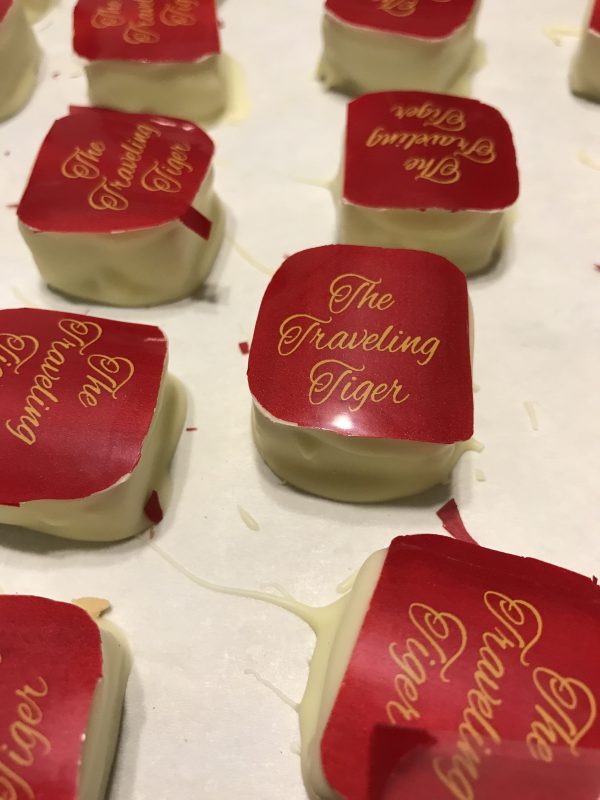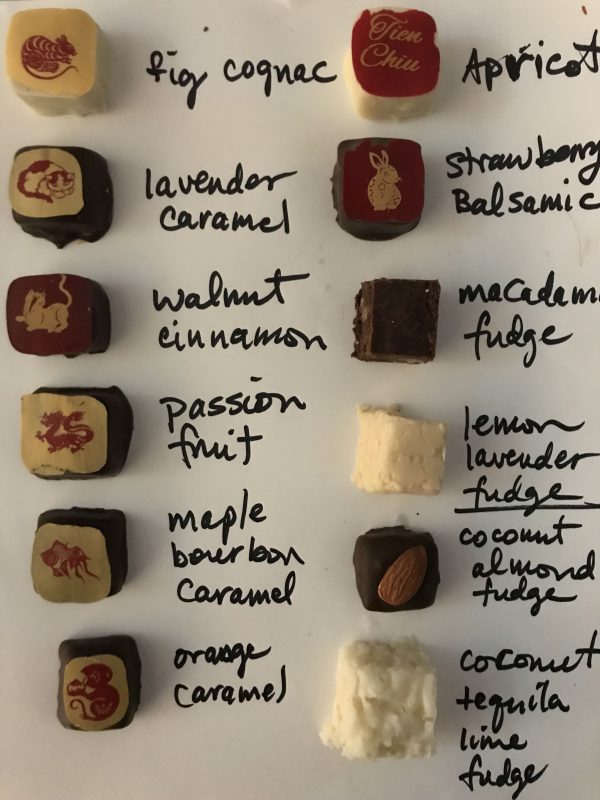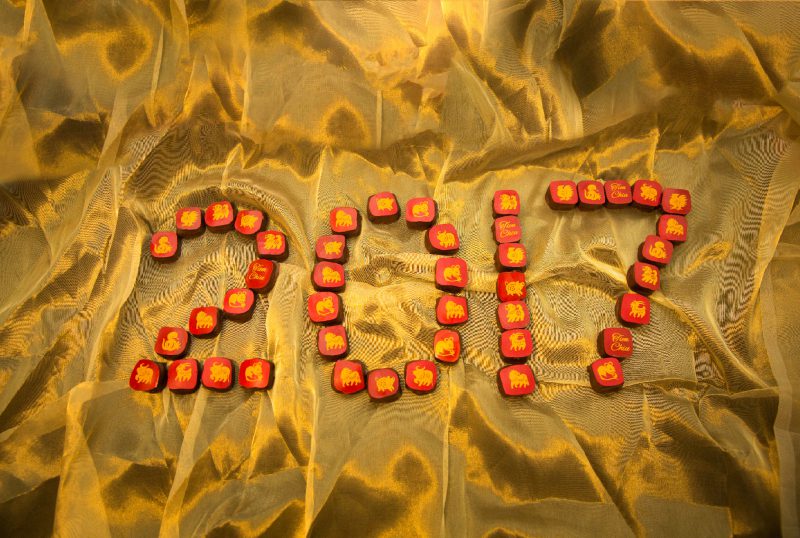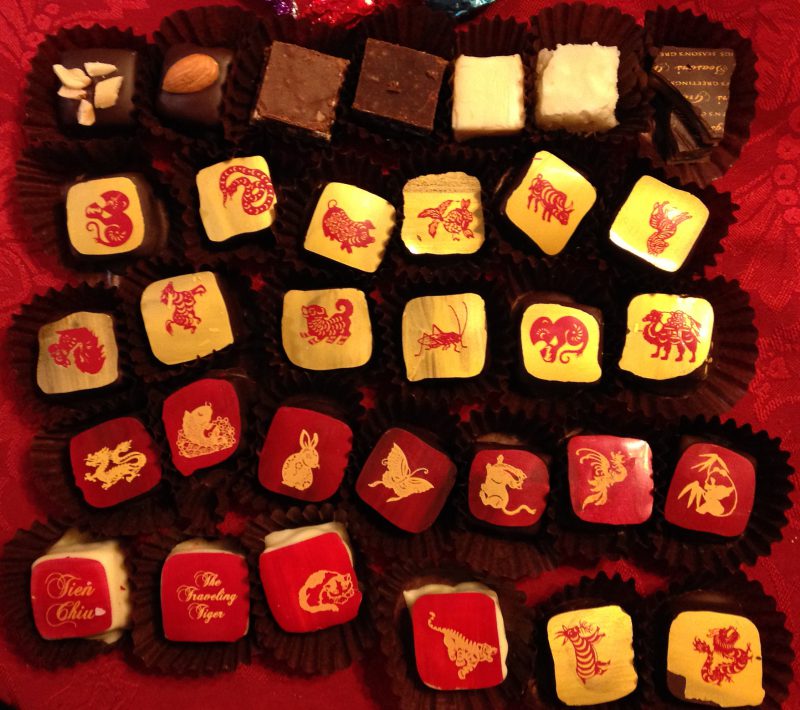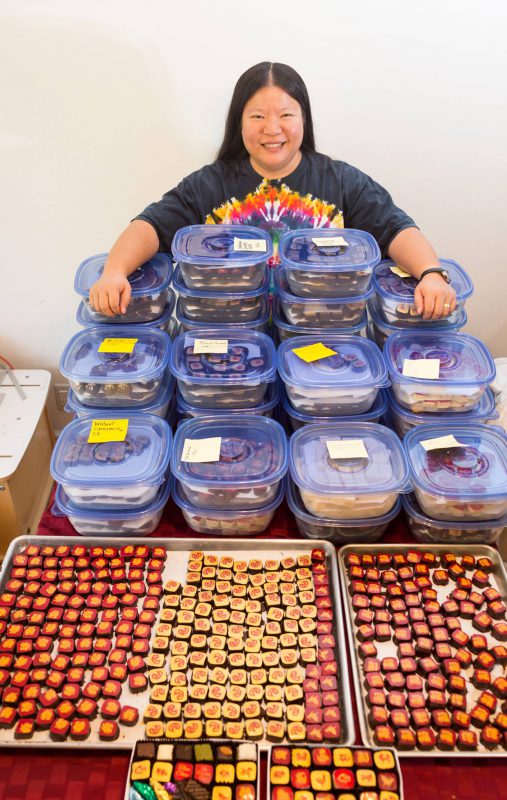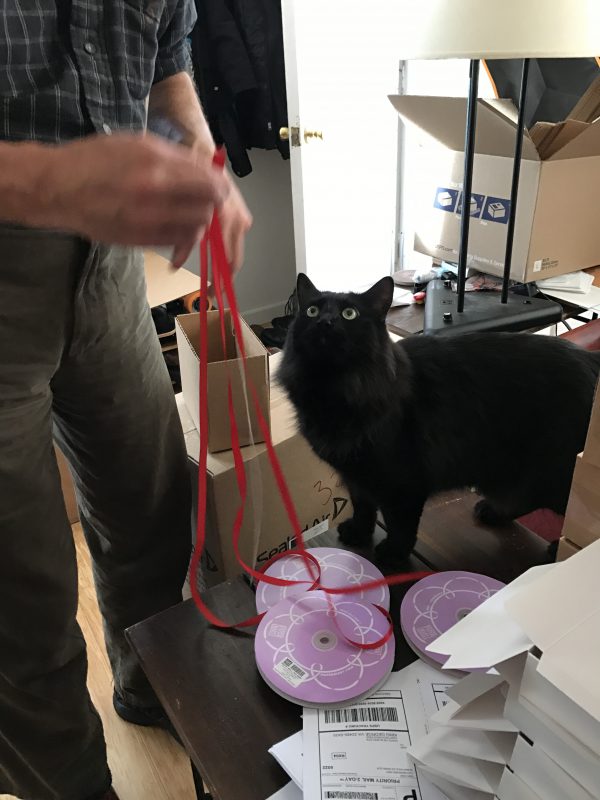All the boxes are now claimed! Chocolates for Charity is closed. Thanks for your support over the years.
A few other tidbits:
- The chocolates are perishable, as good chocolates are wont to be. Eat them within a week or else put them in the fridge. If you put them in the fridge, my advice is to let the chocolates come to room temperature before eating them; you’ll get better flavor that way. (of course, I have never been disciplined enough to follow this advice, but maybe you have more willpower than I do!)
- You can see the chocolates (and flavor lists) for the last few years here:
A bit about my chocolatiering:
I’ve been chocolatiering for almost 30 years now, making about 90-120 pounds of bonbons every November for friends, family, and Chocolates for Charity donors. I spent one winter training with Richard Donnelly of Donnelly Chocolates (who frequently appears in Top 10 lists of American artisan chocolatiers – the most recent appearance was in National Geographic’s Top 10), so I’m pretty good at chocolatiering now. I’d put my work on par with some of the best artisan chocolatiers – though I don’t have the equipment to do some of the really fancy stuff, you won’t find better chocolates elsewhere. I also do a lot of exotic flavors that you won’t find elsewhere.
